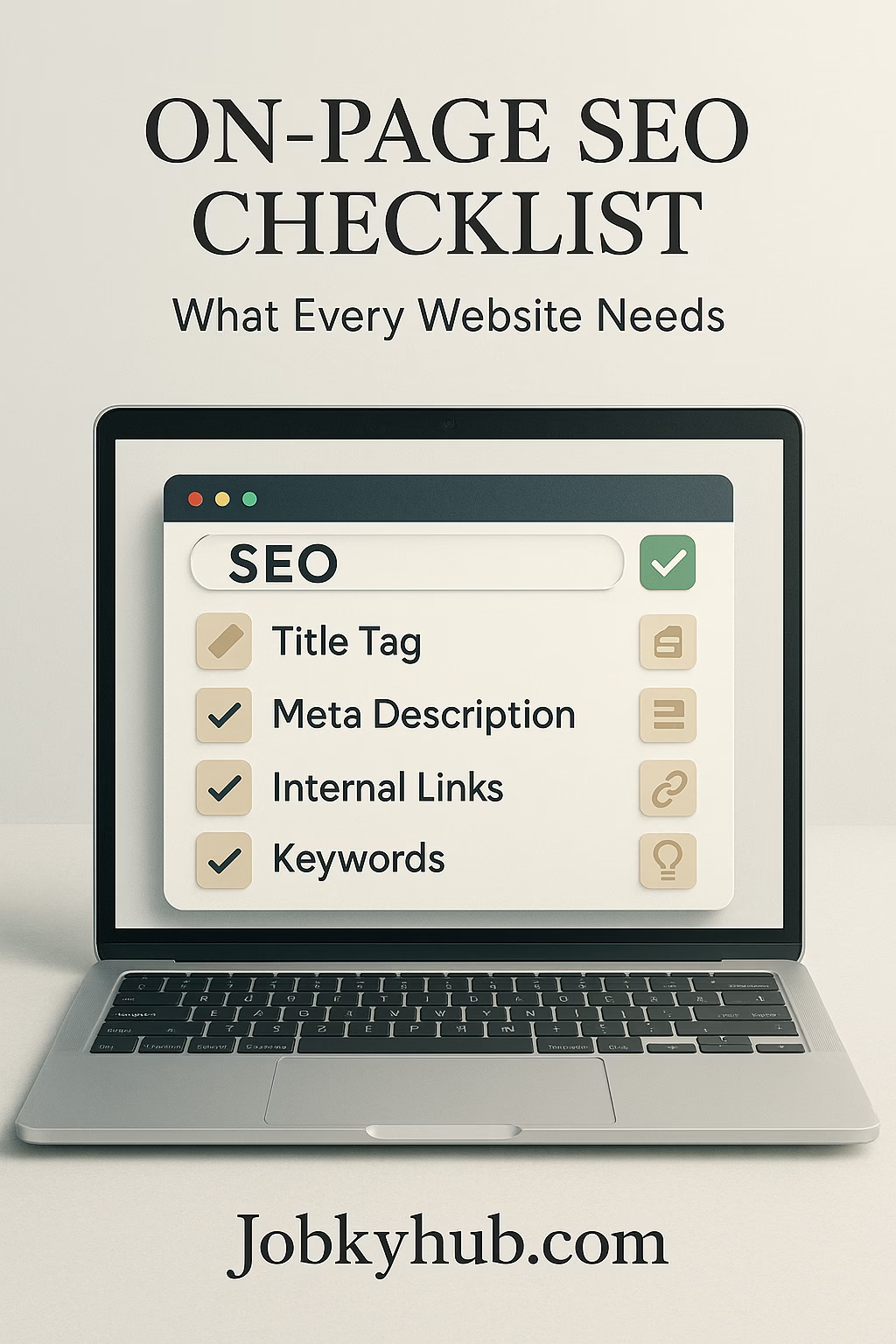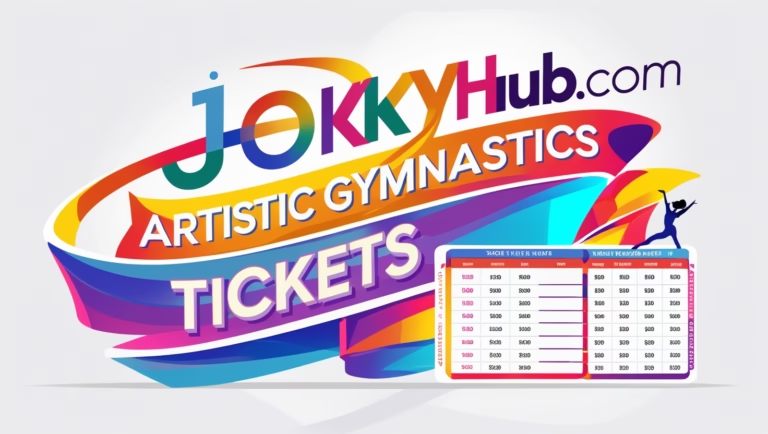
Click Here To More Help Full Article.
Introduction to On-Page SEO
On-page SEO refers to the practice of optimizing individual web pages to improve their search engine rankings and drive relevant traffic. Unlike off-page SEO, which focuses on external signals like backlinks and social media shares, on-page SEO is entirely about the content and structure within a website. This component of search engine optimization is vital because it is one of the first points of engagement users have with your site. Ensuring that on-page elements are in order can lead to a significant increase in visibility and rankings.
The importance of on-page SEO lies in its ability to facilitate a better user experience and provide search engines with clear indicators regarding the relevance of your content. Key elements of on-page SEO include quality content, HTML tags, and overall user experience. Quality content serves as the foundation, as it addresses the needs and queries of users. When content is well-researched, informative, and engaging, it not only resonates with the audience but also satisfies search engine algorithms that prioritize relevant and valuable information.
Optimizing HTML elements such as title tags, meta descriptions, and header tags are critical as they help search engines understand the context of your content. These elements should include focus keywords naturally while maintaining readability. Furthermore, enhancing user experience through intuitive site navigation, fast loading times, and mobile optimization cannot be overstated. A seamless experience encourages visitors to stay longer on the page, reducing bounce rates and positively influencing search rankings.
In summary, mastering on-page SEO is a crucial step in any comprehensive search engine optimization strategy. Prioritizing quality content, HTML elements, and user experience will significantly enhance a website’s performance in search engine results, aiding in the visibility and ranking efforts essential for online success.
Keyword Research and Implementation
Keyword research is a foundational step in the optimization of on-page SEO. It serves as the compass that guides content creation and helps ensure that web pages align with user intent. Understanding the significance of relevant keywords not only enhances visibility in search engine results but also drives targeted traffic to a website. Therefore, identifying the right keywords is crucial for any effective SEO strategy.
There are numerous tools available for conducting keyword research. Popular options include Google Keyword Planner, SEMrush, and Ahrefs, which provide insights into search volumes, competition levels, and keyword variations. These platforms can help users discover both primary and long-tail keywords, the latter being particularly valuable for niche markets. Long-tail keywords often indicate higher purchasing intent, making them ideal for conversion-focused content.
Once relevant keywords have been identified, the next step involves their strategic implementation within website content. It is essential to weave these keywords naturally into various elements such as titles, headers, body text, and meta descriptions. For instance, using the chosen keyword in the title can significantly impact click-through rates while should be integrated into H1 and H2 tags to enhance content structure.
Moreover, creating relevant content around the identified keywords helps in fulfilling user intent. This entails crafting high-quality, informative articles that provide real value to visitors. However, care must be taken to avoid keyword stuffing, which can lead to penalties from search engines. Instead, keywords should fit seamlessly into the text, maintaining a natural flow and enhancing overall readability.
In conclusion, effective keyword research and implementation are indispensable for optimizing on-page SEO. By utilizing appropriate tools and techniques, website owners can ensure their content is both relevant and easily discoverable, leading to improved search rankings and user engagement.

Optimizing Title Tags and Meta Descriptions
Title tags and meta descriptions are fundamental components of on-page Search Engine Optimization (SEO) that play a crucial role in determining a website’s visibility on search engine results pages (SERPs). The title tag, which is displayed as the clickable headline for a given result, should contain primary keywords and encapsulate the essence of the page content. This not only aids search engines in indexing your site but also aligns with user search intent, increasing the likelihood of user interaction.
Best practices recommend that title tags be crafted to remain within the character limit of approximately 50 to 60 characters. This ensures that the entire title is visible without being truncated in SERPs, allowing users to understand the content context instantly. To enhance the effectiveness of title tags, it is advisable to place the primary keyword close to the beginning, making it more prominent in search queries. Additionally, using action-oriented language and incorporating branding elements can further entice users to click on your link.
Similarly, meta descriptions provide a succinct summary of the web page, typically 150 to 160 characters, that appears beneath the title tag in search results. While meta descriptions do not directly influence rankings, they significantly impact click-through rates (CTR). Effective meta descriptions should include relevant keywords and actively engage the reader by addressing their needs or leading with a compelling reason to click. Incorporating a call to action can also motivate users to engage with the content. By carefully optimizing both title tags and meta descriptions, websites can improve their visibility and appeal in the competitive digital landscape.
Heading Tags and Content Structure
Effective content structure is pivotal for enhancing both user experience and search engine optimization (SEO). One of the key components in achieving this is the strategic use of heading tags, which include H1, H2, H3, and so forth. These heading tags serve as a framework for organizing content, allowing readers to easily navigate through information while also providing clear visual cues. The H1 tag, for instance, typically represents the title of the page and should include the primary keyword to signal the main topic to search engines. Subsequent heading tags (H2, H3) can be used to break down the content into manageable sections, improving readability and facilitating better comprehension of complex topics.
By employing headings systematically, webmasters can create a logical flow of information. This hierarchy not only aids readers in understanding the relationship between ideas but also allows search engines to parse and index content more effectively. When search engines can accurately assess the structure of a web page through well-defined headings, they are more likely to rank that page higher in relevant keyword searches. For instance, utilizing H2 tags for subheadings that contain related keywords helps reinforce the overall theme of the content, aligning with SEO best practices.
Moreover, incorporating keywords within heading tags, particularly in H2 and H3 tags, serves a dual purpose. It not only enhances the chances of ranking for those terms, but it also provides context and relevance to the various segments of content. This attention to structure and keyword optimization is beneficial in reducing bounce rates, as visitors are more inclined to stay on a well-organized page that presents information clearly. In summary, the appropriate use of heading tags is essential in crafting a coherent content structure, ensuring that both users and search engines can easily navigate and comprehend the material presented.
Image Optimization Techniques
Effective image optimization is paramount for improving a website’s loading speed and search engine visibility. One of the foremost techniques involves the careful selection of file names. Utilizing descriptive, keyword-rich file names can significantly enhance SEO. For example, a file name like “blue-sneakers-running-shoes.jpg” is more informative than a generic label such as “IMG_1234.jpg.” This approach not only provides context to search engines but also can improve the overall accessibility of your content.
Another essential aspect of image optimization is the use of alt text. This descriptive text functions as a guide for search engines and visually impaired users, explaining the content of an image. Structured alt text that includes relevant keywords can aid in better indexing by search engines while ensuring compliance with accessibility standards. For instance, instead of merely stating “A dog,” a more optimized alternative would be “Golden retriever playing fetch in the park,” which provides clearer context and improves the image’s potential to rank in image search results.
Image compression is also critical in optimizing website performance. Large image files can lead to slow loading times, which negatively impact user experience and SEO rankings. Employing tools like JPEGmini, TinyPNG, or other image compression software can help reduce file sizes without compromising visual quality. This balance is essential, as faster loading images contribute to decreased bounce rates and increased user engagement, factors that search engines consider when ranking websites.
Incorporating these image optimization techniques can have a profound impact on a website’s performance, helping to boost visibility in search engine results and enhance overall user satisfaction. By focusing on descriptive file names, appropriate alt text, and effective image compression, webmasters can ensure their images contribute positively to both SEO and user engagement.

Internal Linking Strategies
Internal linking is a crucial component of effective on-page SEO, as it not only enhances site navigation but also helps distribute page authority throughout the website. A well-structured internal linking strategy can lead to improved user experience and increased search engine visibility by guiding users and crawlers alike through the content. Utilizing effective techniques for creating internal links can further amplify the SEO value of a website.
One of the key strategies in internal linking is the use of descriptive anchor text. Instead of using generic phrases like “click here,” selecting specific keywords relevant to the linked content can help both users and search engines understand the context and significance of the pages. This practice not only helps with navigation but also lends credibility to the content, thus enhancing SEO. Anchor text is a vital element because it provides a clearer sense of what a user can expect on the linked page, thereby improving click-through rates and user engagement.
Furthermore, it is important to link to relevant content within the website. By connecting pages that share themes or topics, the internal link structure can create a network that keeps visitors engaged and encourages them to explore more information. This not only reduces bounce rates but also increases the average time spent on site, positively impacting SEO performance. Additionally, maintaining a user-friendly link structure is essential for improving overall site organization. Instead of overwhelming visitors with numerous links, including a moderate number of well-placed internal links within a page will enhance both clarity and usability.
In summary, implementing these internal linking strategies—emphasizing descriptive anchor text, focusing on relevant content, and ensuring an organized link structure—can significantly improve site navigation and ultimately uplift the website’s SEO value. Effective internal linking not only serves the dual purpose of enhancing user experience but also strengthens the website’s authority and relevance in search engine results.
Mobile-Friendliness and Responsive Design
In today’s digital landscape, mobile-friendliness is essential for any website seeking to provide a satisfactory user experience. With an increasing number of users accessing websites through mobile devices, it has become critical for websites to adopt a responsive design. A responsive website automatically adjusts its layout and content based on the device’s screen size, ensuring optimal usability across all platforms. Google prioritizes mobile-friendly sites in its search results, particularly following the implementation of mobile-first indexing, meaning that the mobile version of a website is considered the primary version for ranking purposes.
To effectively determine whether a website is mobile-friendly, website owners can utilize tools such as Google’s Mobile-Friendly Test. This tool evaluates how easily a visitor can use a site’s mobile version and assesses critical factors like text readability, touch element spacing, and viewport configuration. Ensuring that a website passes this test can significantly enhance user experience, thus decreasing bounce rates and improving overall engagement. Additionally, websites that are well-optimized for mobile devices tend to perform better in search engine rankings, further highlighting the importance of mobile usability.
Improving mobile usability can be achieved through various strategies. Start by simplifying navigation to accommodate touch-based interactions and minimizing the number of clicks required to reach important content. It is also crucial to compress images and optimize loading times, as slow-loading pages can lead to higher abandonment rates. Furthermore, ensuring that forms are easy to fill out on mobile screens can significantly improve user interaction and conversion rates. By focusing on mobile-friendliness and responsive design, website owners can effectively retain visitors, which ultimately boosts SEO performance and enhances online presence.

Page Speed Optimization
Page speed is a critical factor in search engine optimization (SEO) that significantly influences both user experience and search rankings. A fast-loading website not only retains visitors but also encourages them to explore further, reducing bounce rates. In an increasingly digital world where users expect immediate access to information, optimizing page speed has never been more essential. Research indicates that a delay of even a few seconds in page load time can lead to substantial declines in user engagement and conversions.
To effectively assess and improve your website’s page speed, it is beneficial to utilize various tools that analyze load times and provide actionable insights. Tools such as Google PageSpeed Insights, GTmetrix, and Pingdom allow webmasters to identify bottlenecks that may be hindering performance. These tools can highlight critical areas for improvement, including server response times, which can be optimized by upgrading hosting services or configuring content delivery networks (CDNs) for enhanced resource distribution.
Another avenue for improving page speed is leveraging browser caching. This technique allows browsers to store previously loaded resources, enabling quicker access during subsequent visits. By configuring caching rules, webmasters can ensure that images, stylesheets, and scripts do not need to be reloaded with every visit, thus reducing load times significantly.
Additionally, optimizing assets such as JavaScript, CSS, and images can further streamline loading processes. This includes minifying code, which removes unnecessary characters and spaces, and compressing images without sacrificing quality. Prioritizing content that is essential for the initial render will also contribute to a faster perceived performance. Employing these strategies not only benefits SEO but also enhances overall user satisfaction and engagement on the website.
Conclusion and Best Practices Summary
In this post, we have outlined a comprehensive on-page SEO checklist that encompasses essential elements for optimizing your website. Effective implementation of these on-page SEO techniques can significantly enhance your search engine rankings, ultimately leading to increased organic traffic. Firstly, optimizing title tags, meta descriptions, and headers ensures that search engines accurately interpret your content, which is necessary for achieving high visibility in search results.
Furthermore, the importance of content quality cannot be overstated. High-quality, relevant content that addresses user intent not only improves retention but also fosters trust with your audience. Incorporating keywords naturally within the content enhances the likelihood of favorable ranking while maintaining readability. Additionally, the strategic use of internal and external links can improve both user experience and page authority.
Website performance is another critical factor that contributes to on-page SEO success. Pages that load quickly provide a better user experience, reducing bounce rates and keeping visitors engaged. It is imperative to optimize images and leverage browser caching to improve load times. Moreover, ensuring that your website is mobile-responsive is crucial, as an increasing number of users access content via mobile devices.
Lastly, periodic audits of your on-page SEO strategies are advisable. Search engine algorithms are constantly evolving; thus, staying informed about the latest trends and updates is vital for maintaining competitiveness. By revisiting these practices and adjusting your strategies accordingly, you can ensure continued improvement in both search engine rankings and user satisfaction.
Click Here To More Detail For This Article.






